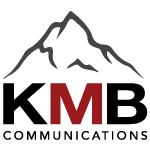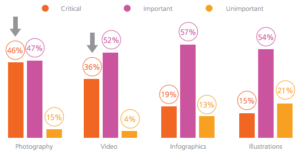Increase visibility, build trust, and drive leads through strategic communications.
As a public relations and strategic communications firm, we’ve noticed the content marketing trend has been growing in the AV industry. In the past several weeks, we’ve had new clients and existing clients, alike, sign on for assistance with their inbound marketing strategy and content creation to supplement their PR program through KMB Communications.
One of the benefits to using a single firm to manage PR and content marketing (and possibly even social media management, too) is to ensure consistency of messaging and adherence to your company’s overall marketing strategy.
What Is Content Marketing?
Content marketing, sometimes called inbound marketing, uses high-quality content to build trust and establish your company as an information resource for your customers. Content marketing helps:
- Drive traffic to your site
- Establish your brand as a trusted industry resource
- Build relationships
- Place your website on or near the top page in Google’s organic search results
- Create conversions to increase ROI
When you put a strong content marketing plan together with a strategic PR plan, you’ll see the benefits of increased visibility across all channels – print media, online media, social media, and search. Whether you hire an outside firm or opt to manage your content marketing campaigns yourself, these five steps can help drive your success.
1. Determine the components of your content program.
Content marketing includes blog posts, guest posts placed on other sites, editorial features written for magazines, videos, and even social media posts written to promote it all. (Although this last point often falls into a separate realm of “social media strategy.”)
Decide on the length, frequency, and format of your content. Are you creating weekly, mid-length posts? Weekly posts and some long-form content like case studies or white papers monthly? Do you want to blog daily, providing short news bytes of information with meatier posts presented weekly? Are you producing videos? How often?
Remember, a larger budget allocation allows your company to push out more content and see results faster.
Don’t forget to incorporate photos, videos, and infographics into your overall plan. When information is paired with a relevant graphic, people remember 65 percent of the information three days later, and content with an image gets 94 percent more views than content without a graphic, according to a report by Hubspot. We understand that finding the perfect graphic or creating videos can be a drain on resources — but a full-scale communications agency is here to make content marketing easier for you.
2. Outline Topics
Before you launch a content marketing initiative consider your overall communications strategy. To ensure consistent messaging, your blog, along with case studies, editorial features, and guest blog posts should be in alignment with your other marketing initiatives.
Build your content around events like trade shows and new product launches to ensure a steady pipeline of newsworthy material.
Ask your sales team what questions their prospects ask most frequently. You’ll find tons of post ideas in their responses. After a few brainstorming sessions between your content writers and your sales team, you should have enough ideas to fill an Excel sheet.
Be open to course corrections based on industry news and trends or posts that did extremely well and may deserve a follow-up post to capitalize on the buzz and keep the Web traffic rolling in.
Since marketing campaigns, strategies, and tactics in many companies change weekly (if not daily or even hourly!) your outline should be an ever-evolving document.
3. Begin publishing content and track your results.
You can’t improve what you don’t measure. Many professional bloggers use Google Analytics for tracking their traffic but there are plenty of ways to measure your hits and, of course, conversions that you can follow back to content creation. Whatever method you use, follow it closely, tracking results weekly.
4. Keep going when the going is good.
There comes a time in the life cycle of inbound marketing when those involved forget what has created such tremendous results. We may get spoiled by the number of leads pouring in and the new business the website generates, and we think we can pull back. The business owner may think, “We’re getting such good traffic, we don’t need to promote anymore.”
Which is, of course, the exact opposite of what they should be thinking, which is: “Wow, look at the results! I wonder how much more the business would grow if we expanded the budget and doubled our efforts?!”
5. Lather. Rinse. Repeat.
Regular, high-quality content and community interaction generates leads. When you’re in the beginning stages, you may not get much feedback. Keep going. And when it’s going well, consider ramping up those efforts to push out more content and generate even more leads.
Revisit your strategy quarterly (at least) in order to continue creating more of the kinds of content that generates the best results.
A strategic communications firm that knows the ropes and has years of experience with multiple aspects of inbound marketing, along with traditional PR outreach and marketing strategy, can help you make the necessary course corrections and keep you on track to help your business grow through the power of content marketing.
Are you ready to experience the power of content marketing as part of your company’s overall PR and communications strategy? KMB Communications can help.


